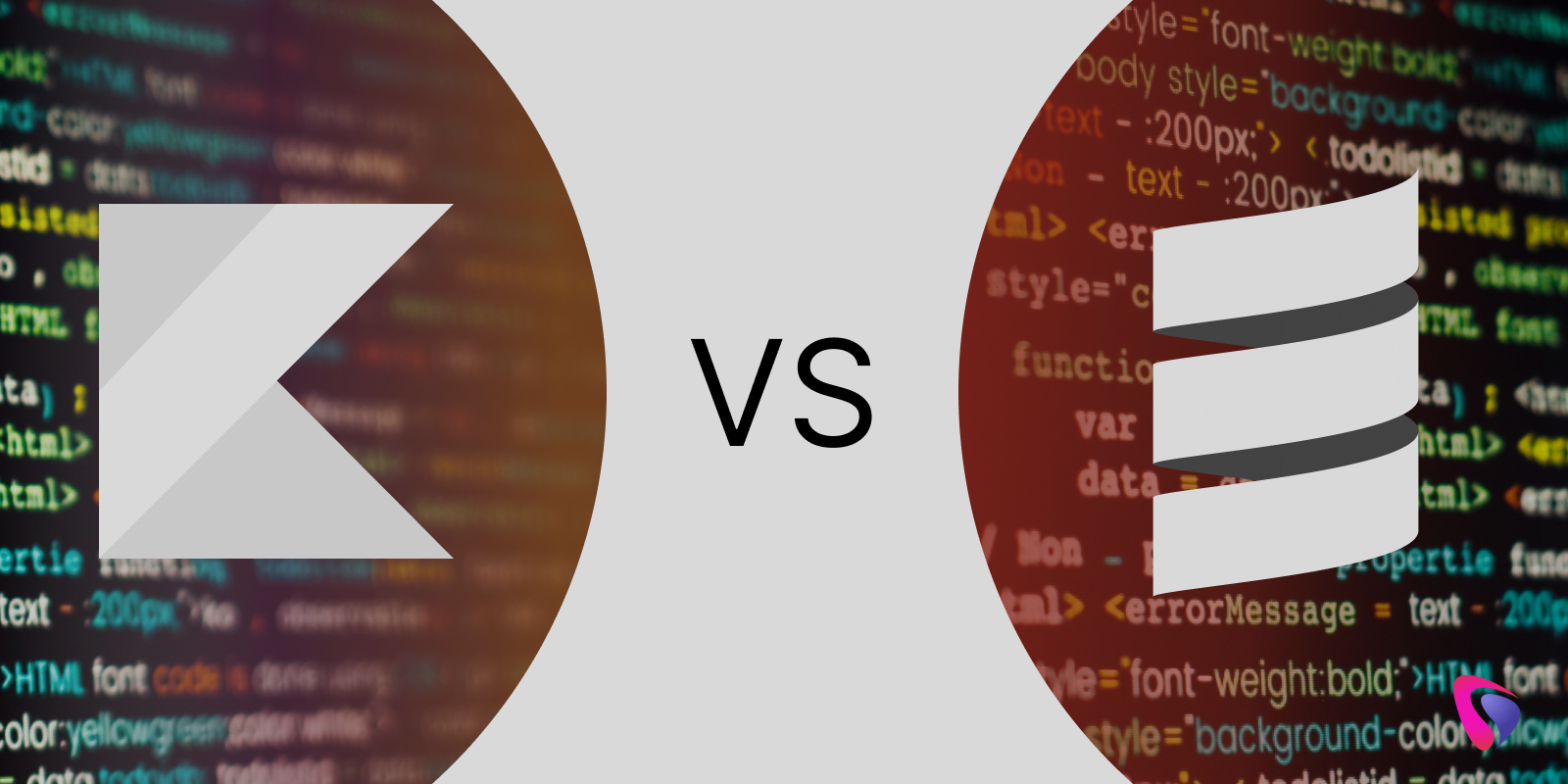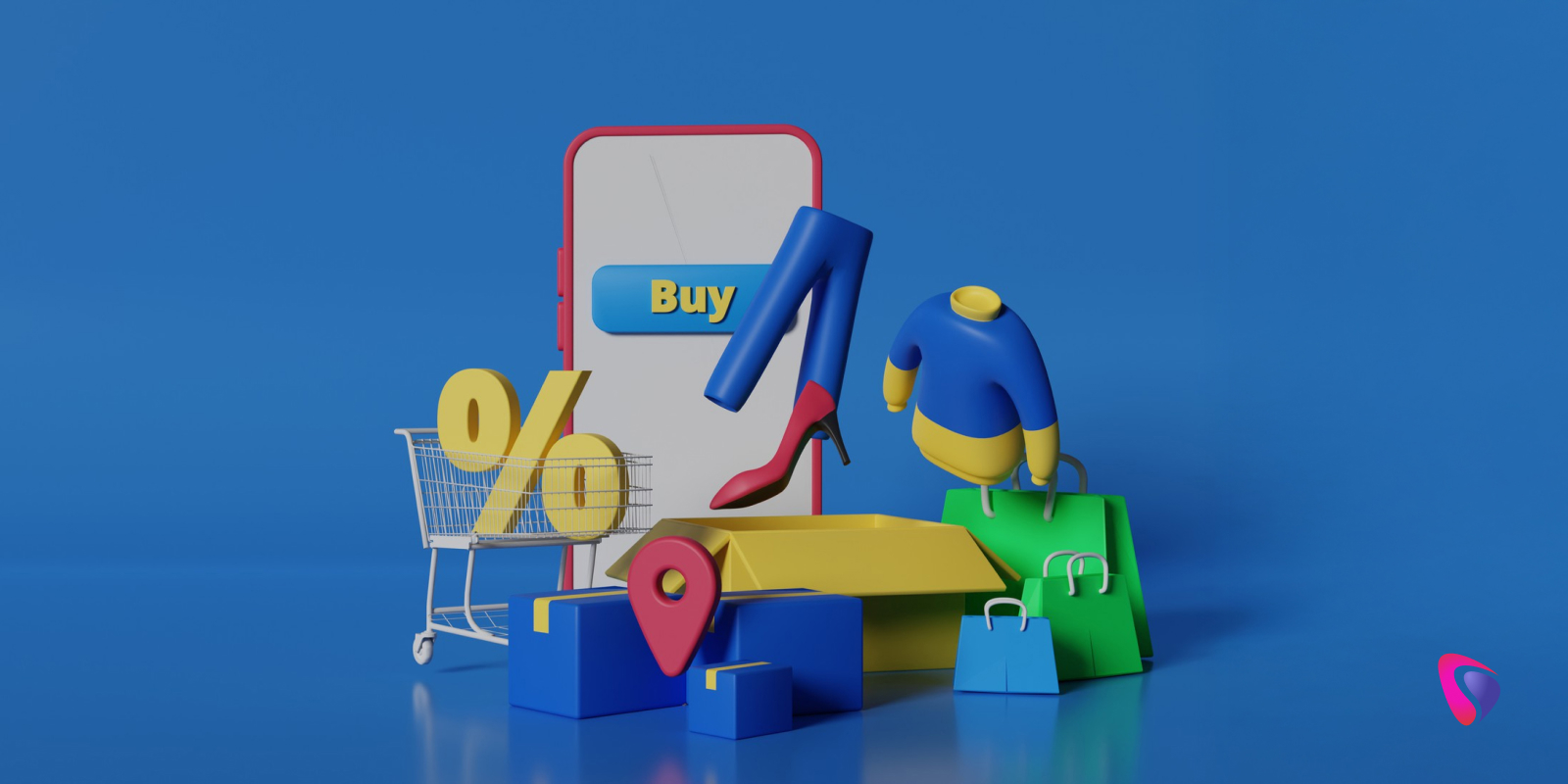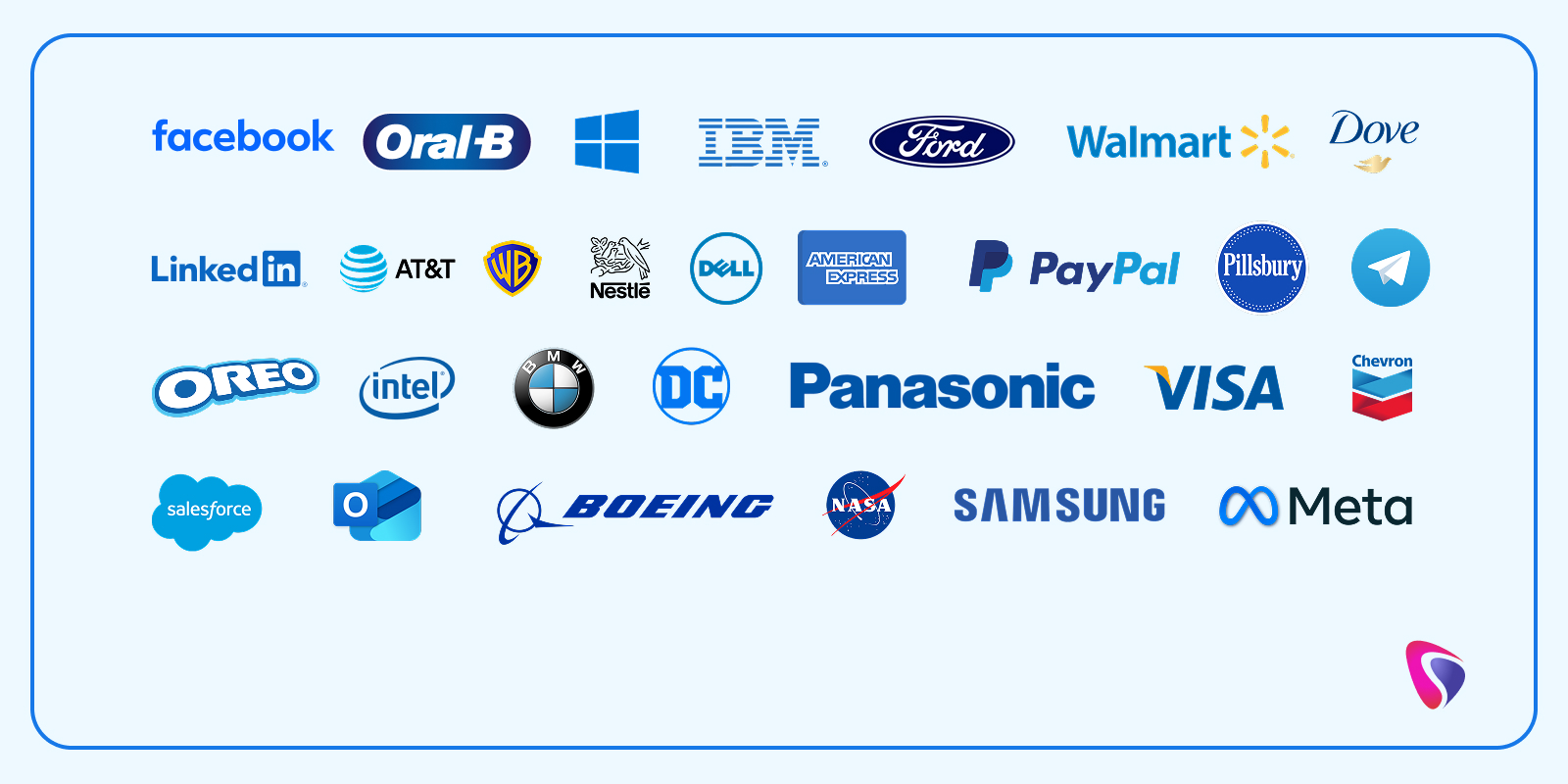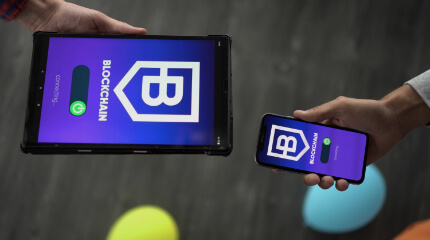
Have you heard of mighty kings like Solomon, who fathered many children? Think of Java as a king who inspired and fathered many JVM programming languages. Some notable mentions include C#, Groovy, Kotlin, Scala, and Clojure. As per research, 98.8 % of all websites used JavaScript in 2025. Out of all the above-mentioned languages, Kotlin and Scala are the most favored among app developers.
According to the Stack Overflow Survey 2024, 9.9% of developers worldwide use Kotlin, whereas Scala’s share is 2.9%. These may seem like small numbers, but with 28.7 million developers globally, the numbers add up significantly. By 2030, these numbers may exceed 45 million.
Many developers find it easier to grasp the basics of Kotlin because its syntax is quite similar to Java, which they are already familiar with. In contrast, Scala incorporates the best of both worlds, functional and object-oriented programming styles. This amalgamation of styles can be quite challenging for beginner developers, making it hard for them to learn the ropes.
What is Kotlin?
In simple language, Kotlin is Java on steroids. Kotlin does what Java can do, but without the latter’s cons. With advanced features and futuristic capabilities, Kotlin development is for professionals who want to use advanced technology and ground-breaking tools without compromising quality.
Through its open-source capabilities, developers and other professionals can use or modify Kotlin’s code in a way that fits their specific needs. It can work in various environments, including Android, JavaScript, Native, and JVM. Many believe that Kotlin is based on JavaScript, but that's not true. Although it embraces syntax and design principles from Java, it remains a completely distinct language in its own right, with unique libraries.
Kotlin’s biggest trump card is its Java interoperability, allowing coders to use both within the same project. By incorporating object-oriented and functional programming styles, Kotlin facilitates greater flexibility in meeting project requirements. Additionally, it has valuable features and shortcuts to boost productivity while reducing effort.
Top Features of Kotlin
- Supports Object-Oriented & Functional Programming
- Operator Overloading
- Concise Syntax
- Null Safety
- Extension Functions
- Interoperability with Java
- Caroutines
- Smart Casts
- Modern IDE Support
What is Scala?
Despite being one of the most distinguished and commonly employed programming languages, Scala has a few drawbacks, such as a limited type interface, while its support for functional programming leaves much to be desired. To address these drawbacks, Martin Odersky created and released Scala in 2003. At the same instant, Scala supports object-oriented and functional programming to power complex apps and systems.
Why is Scala one of the most preferred languages for app development? The reason is its powerful scalability features. It accommodates diverse needs, from small scripts to large-scale applications. Esteemed companies like Twitter, Apple, and Walmart use Scala for their key projects owing to its scalability, flexibility, and interoperability with Java.
In a sense, Scala has gone through a major shift over the years. Upon its introduction back in 2003, it grabbed the limelight for its concise syntax and Java interoperability. More versions of Scala followed, which only produced further improvements and upgrades, particularly in the case of Scala 3. These improvements and upgrades have enhanced the overall developer experience and boosted productivity.
Top Features of Scala
- Statically Typed
- Functional and Object-Oriented
- Executes Java Code
- High Order Functions
- Concurrency Support
- Compiles & Executes On JVM
- Implicit Conversions
- Intersections & Union Types
Kotlin Vs. Scala
Below is a table-wise comparison of Kotlin and Scala.
|
Aspect |
Kotlin |
Scala |
|---|---|---|
|
Programming Paradigm |
Hybrid (Functional Programming with OOP style) |
Hybrid (Functional Programming with OOP style) |
|
Tooling Support |
Backed by Google & JetBrains (Android, IntelliJ IDE) |
Backed by JetBrains (IntelliJ) |
|
Community Support |
Smaller (growing but still limited) |
Larger (over 15 years of community and resources) |
|
Runtime Size |
Smaller runtime size, but apps can grow large (800KB overhead) |
Larger runtime due to complex features and support |
|
Code Readability |
Concise, but may not be easy to read for beginners |
Highly flexible, but may not be beginner-friendly for many |
|
Compilation Speed |
Fast like Java |
Slow (may take a few minutes for large projects) |
|
Pattern Matching |
Limited pattern matching support |
Full support for powerful pattern matching |
|
Null Safety |
Top-notch null safety support (safe calls, null checks, etc.) |
Less effective (Option keyword, but still prone to NPE) |
|
Interoperability with Java |
Seamless Java interoperability |
Lower (interoperability with Java can result in errors) |
|
Higher Order Functions |
Fully supported and convenient |
Fully supported and convenient |
|
Use Cases |
Primarily used for Android development and backend support |
Perfect for backend, big data, and functional programming |
|
Object-Oriented Features |
Complete support for OOP (classes, inheritance, etc.) |
Supports OOP with added flexibility (e.g., operator overloading) |
|
Functional Programming Features |
Supports FP with first-class functions and higher-order functions |
Strong FP support with immutability, pattern matching, etc. |
|
Macros and Higher-Kinded Types |
Not supported |
Full support for macros and higher-kinded types |
|
Development Speed |
Faster development with fewer lines of code (reduces bugs) |
Flexible, but may increase development time due to complexity |
|
Java Compatibility |
Excellent compatibility, works seamlessly with Java libraries |
Good, but can have issues when calling from Java |
|
Advanced Features |
Lacks some advanced features like higher-kinded types and macros |
Supports higher-kinded types, such as advanced pattern matching |
Pros and Cons of Kotlin
Below are the pros and cons of Kotlin.
|
Kotlin Pros |
Kotlin Cons |
|---|---|
|
Faster development and easier maintenance due to concise and intuitive syntax |
Similar to Java, but Kotlin has a steep learning curve. Requires developers to learn new concepts and syntax |
|
Works smoothly with existing Java code and tools, allowing developers to use both languages simultaneously |
Slower clean build times compared to Java, but it works faster during incremental builds |
|
Integration with IDEs like Android Studio simplifies maintenance and continuous development |
Limited developer pool makes recruitment challenging |
|
Clear and compact syntax reduces errors, while compilers can catch errors instantly |
Smaller community compared to Java, meaning fewer resources and learning material |
|
Stringent testing since 2011 has improved its reliability for production |
Switching some codebase to Kotlin is complex. May lead to potential fragmentation while combining both languages. |
|
Designed to enhance Java’s features for seamless transition to Kotlin |
Being a newer programming language compared to Java, Kotlin has fewer libraries and frameworks. |
|
Allows developers to use functional and procedural programming for more flexibility |
Smaller community compared to Java, which limits the scope for collaboration and support |
|
Supported by major IDEs and tools, ensuring smooth integration with existing development workflows |
Mostly seamless interoperability with Java, but compatibility issues may arise when integrating Kotlin with obsolete Java systems |
|
Null safety feature cuts the risk of NullPointerExceptions, ensuring codebase safety |
Gets Google support, but the level of tool optimization isn’t the same as Java in Android Studio |
Pros and Cons of Scala
Below are the pros and cons of Scala
|
Scala Pros |
Scala Cons |
|---|---|
|
Requires fewer lines of code, resulting in faster development. |
Advanced features may be hard to learn for beginners and even seasoned Java developers |
|
Functional programming style results in fewer bugs |
Limited developer pool compared to other programming languages |
|
Knowledge of Scala development improves skills that transfer to other languages |
Compatibility issues arise during integration with existing libraries, tools, or systems |
|
Becomes highly relevant due to adoption by companies such as Twitter, Netflix, LinkedIn |
Compilation time may be slower (than Java) for large codebases |
|
Strong support for advanced features like mixins, pattern matching |
IDE support can be sluggish, even with good IDEs like IntelliJ |
|
Great alternative to Java, C++, and Go for backend and web development |
Dependency on JVM means Scala inherits some of Java’s limitations, like memory overhead |
|
Syntax is easier to learn for developers with a Java or object-oriented background |
Identifying and fixing compiler errors in Scala can be challenging |
|
IDEs like IntelliJ IDEA, Scala IDE, and even Emacs/Atom support Scala effectively |
Rapid evolution of Scala has resulted in occasional backward incompatibilities |
|
Great for building concurrent, fault-tolerant systems (e.g., using Akka) |
Training large teams in Scala can be complex and time-consuming |
|
Strong support through frameworks like Apache Spark, making it ideal for data analytics |
Smaller library base compared to Java, which has an almost 3-decades-old ecosystem |
|
First-class functions, immutability, and rich functional programming features |
Higher run-time costs (in some cases) compared to optimized Java apps |
|
Fewer lines of coding & focus on functionality mean top-quality products |
Greater flexibility and abstraction power can create overly complicated designs |
Scala vs Kotlin - A Detailed Comparison
Below are some points that highlight how Scala and Kotlin fare in 2025. The points will also discuss which programming language is more suited for the app development process.
1. Market Reputation
The Kotlin programming language is familiar to Java developers, and simultaneously, it has evolved with time. Kotlin has new features similar to newer programming languages, making it more concise and expressive. It is less vulnerable to bugs such as null pointer exceptions. No wonder Google supports Kotlin for Android app development.
Kotlin Market Position & Usage
- Over 60% of Android developers use Kotlin. It’s open-sourced on GitHub.
- TIOBE Index - Ranks 24th in 2025 with a 0.74% rating. It has slipped from its top 20 position.
Industry Applications of Kotlin
- Kotlin is gaining increased popularity for backend development (especially for frameworks like Ktor and Spring Boot).
- The Kotlin Multiplatform feature allows developers to write a single code that runs on iOS, Android, and web apps (although the adoption is not that high).
- 9.4% of developers used Kotlin in their projects in 2024.
- Notable companies using Kolin platforms include Airbnb, Uber, Netflix, and Trello.
Kotlin Ecosystem
- Kotlin offers seamless interoperability with Java. This means that developers can use them in the same project without any problems.
- Allows for gradual migration and integration into existing Java codebases.
- A vast library of resources, libraries, and tools fosters innovation and supports diverse development needs.
Compared to Kotlin, Scala is not beginner-friendly. It combines object-oriented and functional programming while infusing complex ideas such as immutability, higher-order functions, and monads. These terms and concepts may sound like Greek and Latin to Java developers. The expressive and feature-rich nature of Scala makes it difficult for developers to grasp. Only after understanding the new concepts can they start working on Scala projects.
Scala Market Position & Usage
- Scala’s TIOBE Index is 27 with a 0.67% rating.
- 55% of Scala engineers use it for data processing.
- 4.3% of websites employing server-side languages use Scala.
Scala Industry Applications
- Preferred choice for data-driven apps, especially with frameworks such as Apache Spark and Akka.
- Strong adoption by fintech startups, large investment banks, and hedge funds. Other sectors leveraging Scala include cloud infrastructure, Big Data, and analytics companies.
- 2.6% of developers used Scala in their projects in 2024.
- Notable companies using Scala platforms include JP Morgan, Barclays, and Morgan Stanley.
Scala Ecosystem
- Mature ecosystem with tools such as Scala-CLI and Mill enhancing development workflows.
- Smaller community compared to many other programming languages. Despite the small community, dedicated Scala developers contribute to libraries and frameworks. This has made Scala a force to be reckoned with in the programming world.
2. Learning Curve
Scala and Kotlin are JVM programming languages, meaning they run on the Java Virtual Machine (JVM), ensuring Java interoperability. However, the time required to master them differs significantly due to distinct design features, philosophy of languages, and intended use cases.
Kotlin Learning Curve
- Kotlin is easier to learn for Java developers because its syntax is similar to Java.
- 100% Interoperable with Java, making Kotlin transitions seamless and effective.
- Key aspects of Kotlin, such as null safety, data classes, short lambdas, and extension functions, contribute to making Kotlin more expressive and concise.
- Java developers can pick up Kotlin quickly, and the reverse is also true.
- Kotlin is easy for Java developers to grasp and master, and in reverse, it is easy for Java developers to ace Kotlin.
- Furthermore, Kotlin has extensive learning resources, including documentation, tutorials, forums, and courses, plus its strong community support makes it an excellent alternative to Java.
- Kotlin’s excellent tooling support facilitates easier coding and faster development cycles.
- Overall, Kotlin has a gentle learning curve. Beginners can get their heads around it within a few weeks to 2 months.
Null safety, data classes, short lambdas, and extension functions are key features that contribute to making Kotlin expressive and succinct.
Kotlin is easy for Java developers to pick up, and in reverse, it is easy for Java developers to pick up Kotlin.
Scala Learning Curve
- Scala is a combination of functional and object-oriented programming, making it more complex for beginners.
- Without an iota of doubt, Scala is significantly more expressive than most programming languages, but its syntax can be rather dense and abstract.
- Scala developers must thoroughly understand its concepts, such as pattern matching, traits, monads, case classes, and high-order functions to unlock its full potential.
- Even though Scala has made giant strides in progress over the past years, Scala’s tooling is not on the same level as Kotlin. This poses challenges during configuration and troubleshooting.
- Developers trying to master Scala can easily access a vast ocean of learning resources and community support. Still, it's difficult for newbies to understand these concepts and apply them in projects.
- Although Scala is widely used in Big Data, functional programming, and high-performance backends, gaining expertise requires considerable learning and effort.
Functional Programming
Scala and Kotlin support functional programming, but their approaches differ greatly. Functional programming is Scala’s core feature, with its key components being the following -
- First-Class Functions
- Immutable Collections
- Higher-Order Functions
- Pattern Matching
- Laziness
- Pure Functions
On the other hand, the primary objective of designing Kotlin was to enhance its Java compatibility. It does have some functional programming features, but it focuses on removing Java’s cons and enhancing its capabilities. However, it does support the following-
- First-Class Functions
- Immutable Collections
- Extension Functions
- Null Safety
- Lambda and Higher Order Functions
The following highlights the main differences between Scala and Kotlin concerning functional programming support.
|
Features |
Scala |
Kotlin |
|---|---|---|
|
First-Class Functions |
Fully supports it, and it is the core of its functional programming approach |
Supports first-class functions, but is not its main focus |
|
Immutability |
Profoundly emphasizes immutability in data structures and collections |
Promotes immutability but doesn’t enforce it, unlike Scala, which is much stricter |
|
Monads and For-comprehensions |
Full support for monads and for-comprehensions |
Zero in-built support for monads and for-comprehensions |
|
Pattern Matching |
Powerful pattern-matching feature to analyze and destructure complex data structures |
Lacks a pattern-matching feature (when expressions are somewhat similar) |
|
Concurrency |
Akka library for actor-based concurrency, Futures, and other concurrency tools |
Offers coroutines that work in a functional style for async programming |
|
Type System |
Advanced type system with traits, type interfaces, and higher-kinded types |
Kotlin’s type system is simpler but less expressive compared to Scala's |
Scala is a better choice if the objective is to -
- Use advanced functional concepts like monads
- Handle complex data transformations without mutating them
- Write declarative code (focusing on the action rather than the process)
- Build large-scale distributed systems.
Kotlin is a better choice if the objective is to -
- Performing functional programming without restricting oneself to a purely functional style.
- Mix and match object-oriented and functional programming styles within the same app.
- Perform functional programming while using Java’s framework and libraries, and eliminate complexity.
4. Pattern Matching
Pattern matching in Scala and Kotlin is vastly different. Scala’s powerful pattern-matching feature allows developers to match simple values such as numbers, types, and structures, or even separate parts of them. On the other hand, Kotlin’s pattern-matching is good for simpler needs, such as matching values or types, it cannot break apart structures deeply like Scala.
In summary, Scala and Kotlin can perform simple matching. However, Kotlin cannot break apart deep structures. Scala is the clear winner for complex matching needs.
5. App Performance
Kotlin
JVM programming languages provide the tools to create Android apps. Using the Java Virtual Machine allows developers to access a vast library of tools and libraries while enjoying the benefits of cross-platform support. Scala can also do the job, but Kotlin scores over Scala in this aspect due to the following reasons -
- Google officially promotes Kotlin. Kotlin’s complete integration with Android development tools and Java compatibility make it ideal for Android development services.
- JetBrains created Kotlin to enhance Android app development. Features such as null safety, concurrency, and interoperability enable optimizations absent in Scala.
- Interoperability with Java ensures developers can easily call Java code from Kotlin and vice versa without compromising quality.
- Kotlin’s highly optimized compiler is engineered to work with Android’s unique architecture. This helps in developing smaller apps that deliver higher performance.
Scala
Scala is not cut out for Android development. Its runtime environment is generic and not suited for Android development. The reasons are as follows-
- Lack of Android-specific features. Android Studio offers native support for Kotlin but limited support for Scala.
- Scala’s standard library is not optimized for Android development, making life harder for developers. They will have to make adjustments to ensure the Scala library’s compatibility with the Android environment.
- Scala’s features are powerful, but they complicate the Android app development process. Debugging and writing functional code can be challenging.
- Scala’s complex compilation, plus additional overheads, can result in large app sizes delivering lower performance.
6. Inline
Inlining a method in Scala can be complicated. Scala does not do it automatically, it needs clear instructions like the @inline annotation. In the absence of the @inline annotation, the compiler can decide whether to perform the action or refrain from it.
In contrast, when one marks a function with inline in Kotlin, the compiler acts immediately. It inserts the function wherever it's used. However, developers must exercise caution when using manual inlining, as using it excessively can hamper performance and increase app size.
Developers prefer Scala over Kotlin for inlining because it gives them more control while avoiding duplication.
7. Null Pointer Exceptions
Developers can assign null values freely to variables in JVM programming languages. However, when they try to access or invoke a method/field on a null object reference, it can create bugs in the software. These bugs can crash programs, degrade performance, and pose security risks.
Kotlin and Scala have different strategies to handle this issue.
|
Aspect |
Kotlin |
Scala |
|---|---|---|
|
Null Safety Integration |
Built into the tape system |
Uses Option to handle null values |
|
Nullable Type Declaration |
Requires explicit declaration using ? (e.g. String? ). |
No direct type declaration for nullability, relies on Option |
|
Null Handling Syntax |
Uses safe calls ( ?. ), Elvis operator ( ?: ), and default values. |
Uses Option ( Some or None ) to wrap nullable values |
|
Null Safety By Default |
No null values allowed by default unless declared as nullable ( ? ) |
null is allowed; must manually convert to Option or handle it. |
|
Safe Access to Null Values |
Safe call operator ( ?.) handles nulls without throwing NPEs. |
Must handle Option values explicitly |
|
Handling null Directly |
Does not allow null unless explicitly declared as nullable. |
Allows null and requires manual handling via Option |
|
Complexity |
Simple and concise null handling |
Requires additional code and complexity with Option |
8. Operator Overloading
Operator overloading is a feature that allows developers to define specific behavior for operators (such as +, =, -, *) when used with custom data types they create. Instead of using this feature to perform basic calculations, it can be used to work with complex data structures, vectors, and newly created objects. This way, developers can use this feature to achieve their desired objective in a way they understand rather than sticking to predefined methods or formulas.
Operator Overloading in Kotlin
- Limited options allowing basic functions like +, and ==
- Makes the code simple, easy to comprehend, and predictable
- Lesser flexibility compared to Scala.
- Disallows the creation of new operators
Operator Overloading in Scala
- Offers greater flexibility, developers can overload any operator
- Improves code readability, especially during custom operations or creating DSLs
- Excessive use of this feature can complicate code. Operators may act unpredictably and create problems during maintenance and debugging.
9. Java Interoperability
Both Kotlin and Scala are interoperable with Java. However, each has its pros and cons. Let’s jump into the details.
Kotlin Interoperability With Java
- Kotlin complies with Java bytecode while seamlessly integrating with Java’s libraries, frameworks, and the JVM ecosystem.
- Developers don’t require special bridge codes or annotations to call Kotlin code from Java. Kotlin compilers automatically generate Java-compliant code.
- Thanks to Kotlin’s null safety and type system’s compatibility with Java, interoperability is not an issue.
- Kotlin migrates easily into Java’s existing codebases. This allows developers to conduct migration in phases without making drastic changes.
Scala Interoperability with Java
- Scala’s advanced type system is trickier compared to Java's. This complicates interoperability and the way Scala and Java work together.
- Scala harnesses implicit conversions to convert one type to another, which can baffle Java developers as they may find it difficult to understand the code.
- Compared to Java, Scala’s type system and generics offer greater flexibility and power, but integrate poorly with Java’s types (which are simpler and concise).
- Scala allows for handling more complex and advanced types compared to Java libraries and frameworks, which mostly support simpler types. Attempting to use Scala with Java tools may result in errors or erratic behavior.
10. Libraries and Frameworks
Both Scala and Kotlin are JVM programming languages. What makes them so special? Their expressive syntax, advanced features, and Java interoperability differentiate them from other programming languages. Also, their robust libraries and frameworks make the development process faster and simpler.
Below is a quick overview of Java and Scala’s libraries and frameworks.
Scala
- Mature Ecosystem - The Scala programming language was launched in 2004, whereas Kotlin arrived on the scene in 2011. Hence, Scala’s ecosystem is more mature.
- Robust Library Support - Since Scala has been around for more than two decades, it has a rich and diverse library. Another reason for its extensive libraries is its emphasis on functional programming. Its libraries include -
- Cats - Provides functional programming abstractions.
- Slick - Functional Relational Mapping (FRM) library for seamless access to databases.
- Shapeless - Facilitates generic programming.
- Akka - Toolkit that helps developers build message-driven apps that can handle thousands of users simultaneously across multiple systems/servers without sacrificing performance.
- Play Framework - Web framework to build scalable apps.
Using the above libraries and tools enables Scala developers to build complex, scalable, and high-performance apps (especially in backend and distributed systems).
Kotlin
- Powerful Library Support - Kotlin was launched late in 2011, but thanks to JetBrains and Google’s support (Android development), its library has grown exponentially.
- Key components of Kotlin libraries include the following-
- Ktor - Framework for building asynchronous servers and clients in Kotlin.
- Exposed - Kotlin’s lightweight SQL library.
- Arrow - Similar to Scala’s Cats, Arrow is a library for functional programming in Kotlin.
Kotlin shines when it comes to its user-friendly libraries, empowering developers to accomplish more with less code. In addition, these libraries are designed to make the code read almost like natural language, making it super easy to grasp and understand quickly.
Most importantly, these libraries support best industry practices for coding, such as immutability, reactive, and asynchronous programming, plus testability and modular design.
11. Documentation
API documentation in Scala and Kotlin has its pros and cons. They are summarized below.
Scala Documentation
- Clear, concise, and highly organized.
- Includes a search and filter option, allowing developers to find classes, traits, or methods easily.
- Overall, the documentation features enhance the user experience while browsing or exploring the documentation.
- While the documentation facilitates easy navigation of known elements, searching for documentation related to broader topics or concepts can be convoluted and time-consuming.
Kotlin Documentation
- Kotlin’s API documentation can be confusing to navigate, making it unintuitive.
- Lacks a built-in search/filtering feature, making it hard for developers to find relevant information.
- To make up for the lack of an in-built search feature, Kotlin has a valuable feature called comprehensive references.
- Comprehensive references educate users on using API features and leveraging documentation knowledge for effective app development.
In terms of documentation, both Kotlin and Scala are equally competitive.
12. Use Cases
Scala and Kotlin are both JVM programming languages, but their use cases differ. Below is a brief explanation of the same.
Kotlin
JetBrains developed Kotlin and enhanced it over the years, while Google embraced it for Android app development. Why does Google promote and recommend Kotlin for Android app development services? The reasons are as follows-
- Simpler Syntax
- Null Safety (safer code)
- More Concise
Other than Android app development, Kotlin is favored for the following-
- Web development - Frameworks like Ktor and Spring Boot
- Server-Side Applications - Backend Services and APIs
- Multi-Platform Apps - Allows developers to share code across iOS, Android, and web.
Kotlin has a modern syntax and offers easy interoperability with Java. Developers can easily learn and understand Java. Kotlin is an excellent alternative for developers who want to maximize productivity while keeping their projects bug-free. On top of that, it lets them tap into Java’s extensive libraries, frameworks, and tools without compromising performance.
Scala
Scala successfully combines object-oriented and functional programming. With these powerful tools, developers can express complex logic with fewer lines of code. They can continue to use classes, objects, inheritance, and interfaces like they did in Java and Kotlin.
- Expressive code - Write complex logic with less code while using advanced language features.
- Immutable Code - Promotes immutability for greater safety and code reliability in concurrent systems.
- Concise Functional Code - Functional features reduce boilerplate while making code more declarative and readable
In short, Scala’s hybrid model is perfect for developers who use object-oriented programming and want to switch to functional programming over time. Also, Scalable enables developers to build highly scalable, performant, and data-heavy apps.
13. Community Support
Community support is crucial for any programming language. It allows users to access a wealth of resources and learning materials, which ultimately speeds up the app development process. Below is a brief explanation of community support for Scala and Kotlin.
Kotlin - Community Support
- Developed and enhanced by JetBrains and promoted by Google, making it excellent for Android development.
- Growing and ever-evolving community is leading to extensive adoption in mobile, backend, and cross-platform development.
- Active forums on Reddit and Kotlin Slack, robust GitHub presence, and regular updates by JetBrains.
- KotlinConf events and contributions from global open-source developers further cement Kotlin’s position.
Scala - Community Support
- Strong backing from Lightbend and widespread adoption in the academic, data engineering, and enterprise sectors.
- Functional programming enthusiasts and big data professionals have dedicated Scala communities (especially Spark users).
- Active mailing lists, conferences, and valuable contributions from universities and dev circles further strengthen Scala’s community support features.
What is the Best JVM Programming Language?
Kotlin Vs. Scala is the essence of this blog. Nevertheless, we must understand that there are other JVM programming languages too. They are as follows -
- Scala
Concise and scalable language that combines functional and object-oriented programming. Popular with big data and back-end systems.
- Kotlin
Modern language with a practical and result-oriented approach to app development. Sought-after by Android, server-side, and cross-platform developers.
- Ceylon
Ceylon’s main objective is to enhance Java’s readability and modularity. However, it has seen minimal adoption and has become nearly inactive.
- Fantom
A programming language developed for cross-platform development with a focus on portability. Aims to target JVM, .NET, CLR, and JavaScript users.
- Clojure
Modern version of Lisp that runs on the Java Virtual Machine. It emphasizes immutability, concurrency, and simplicity in data-driven apps.
- JRuby
Ruby programming language runs on JVM, offers complete Java interoperability while retaining Ruby syntax.
- Jython
In essence, Jython is Python that runs on the JVM. It allows developers to use Java classes and libraries, but it only supports older Python versions.
Best JVM Programming Language - Unbiased Breakdown
There is no straight answer to this question. Every project is different, plus developers’ proficiency in JVM languages varies. The points below may provide some additional clarity.
- Kotlin - Best suited for Android and multi-purpose modern applications.
- Scala - Ideal for big data and developers wanting to strike a balance between functional and object-oriented programming.
- Clojure - Excellent for functional, Lisp-style programming.
- JRuby/Jython - Best for Ruby or Python developers requiring JVM access.
Having said that, most developers prefer Kotlin due to the following reasons-
- Strong Community Support
- Modern Syntax
- Backed by Google (especially for Android development)
Final Verdict
As seen in the above points, neither Kotlin nor Scala emerges as a clear winner for app development. The Scala Vs. Kotlin is a never-ending battle. A large faction of Android app developers favors Kotlin because it offers superior safety features, seamless integration, and a clean, concise syntax. That said, it does have its downsides, like less maturity, fewer IDEs, libraries, and frameworks compared to Scala.
On the other hand, Scala has been around since 2004, but it's not exactly beginner-friendly. It particularly aims to meet the needs of seasoned Java developers, big data engineers, back-end developers, and professionals with a knack for functional programming. Depending on the project requirements, resource availability, and long-term business goals, companies should choose the right JVM programming language.
Hyperlink Infosystem is a trusted app development company with over 12 years of industry experience. With hard work, perseverance, and dedication, we have acquired over 1000 global clients while completing 5000+ projects from start to finish. Be it Flutter, iOS, or hybrid Android app development, our fleet of 1000+ professionals, including mobile app developers, testers, and others, is committed to delivering projects within the agreed deadlines. Talk to our sales rep to find out what we can do for you.
Schedule a Consultation Today!
FAQs
1. Should I hire Java developers from India or the USA?
Hiring Java developers from the USA has its share of benefits. Communication isn't much of an issue since most Americans are fluent in English. The U.S. has a vibrant culture of innovation, which means companies can easily find developers who are proficient in the latest technologies and trends. Even so, navigating regulatory compliance and dealing with higher development costs can pose significant challenges, particularly for startups and newly established businesses.
On the flip side, hiring Java developers from India can be a smart move for companies looking to save money. Favorable currency exchange rates play a crucial role in this regard. Most Indian developers have good communication skills in English. The only cons are time zone lags and potential project ownership gaps. Teaming up with a renowned app development partner can eliminate these issues.
2. Why should I hire app developers in India?
Hiring iOS or Android app developers in the USA can be expensive for most companies. You need to ask yourself if you have the budget for it. Some people believe agencies in India, South America, or the Philippines may not deliver quality output, but there is no dearth of shoddy workers in North America and elsewhere.
The solution lies in working with professional IT service companies with a good track record. When you can get top-tier talent at affordable rates in India, why hire developers elsewhere? You can save thousands to millions of dollars and use the money for business expansion.
3. Will Scala replace Java over time?
The short answer is no, Scala isn't going to replace Java anytime soon. While Scala brings some impressive features to the table, like functional programming and a more streamlined syntax, Java still holds the upper hand thanks to its well-established ecosystem, vast community of developers, and a user-friendly learning curve.
Scala has carved out a niche in big data tools and backend systems, but Java remains the go-to choice for building enterprise software, games, and applications across mobile, web, IoT, and cloud platforms. With a 30.3% market share, the chances of Scala or any other programming language replacing Java are highly unlikely.
4. What are the disadvantages of Kotlin development?
No programming language is superior or inferior. Each has its pros and cons. The cons of Kotlin and Scala development are as follows.
Cons of Scala Development
- Steep learning curve due to advanced functional programming concepts.
- Slower compilation time for large projects.
- Limited community support compared to Kotlin or Java.
- Tooling Issues
- Overuse of functional features can complicate code.
Cons of Scala Development
- Build times can be slower compared to Java.
- Promising ecosystem, but small at present.
- Lacks maturity for backend in high-performance cases.
- Inconsistent multi-platform tooling outside Android.
- Binary size overhead can be problematic in some contexts.
Consult a trusted app development company to develop custom apps for your organization.
5. Is Scala better for Android app development or vice versa?
Kotlin is better for Android app development compared to Scala. First, Google for Android extends its full support to Kotlin. It integrates completely with Android Studio. When it comes to tools and libraries, Kotlin undoubtedly has the upper hand over Scala in terms of maturity. For companies looking to streamline and speed up their development process, Kotlin’s concise syntax and Android-friendly features can be a real game-changer.
In contrast, Scala increases app sizes and creates compatibility issues when used for Android app development. So, it's safe to say that Kotlin is a better alternative for Android app development.


















